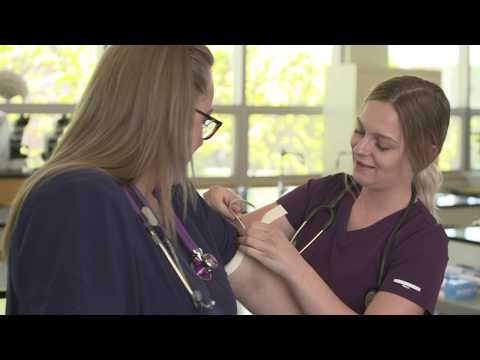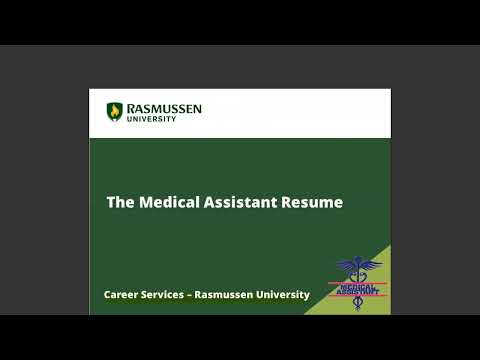Considering a Medical Assistant Program at a Community College?
Contents
- Considering a medical assistant Program at a Community College?
- Why a Community College?
- The Pros of a Medical Assistant Program at a Community College
- The Cons of a Medical Assistant Program at a Community College
- What to Expect from a Medical Assistant Program at a Community College
- The Coursework of a Medical Assistant Program
- The Clinical Component of a Medical Assistant Program
- The Externship of a Medical Assistant Program
- The Certification of a Medical Assistant Program
- The Job Outlook for Medical Assistants
Considering a medical assistant Program at a Community College? Here’s What You Need to Know.
Checkout this video:
Considering a medical assistant Program at a Community College?
While many community colleges offer medical assistant programs, not all of them are created equal. It’s important to do your research to find a program that will give you the skills and knowledge you need to succeed in your career.
Here are some things to look for when considering a medical assistant program at a community college:
– Make sure the program is accredited by a reputable organization, such as the Commission on Accreditation of Allied Health Education Programs (CAAHEP).
– Check to see if the program offers both classroom and clinical instruction. You’ll need both types of training to be a successful medical assistant.
– Find out what type of externship or internship opportunities are available through the program. This can be a great way to gain real-world experience while still in school.
– Ask about the job placement rate for graduates of the program. A good community college medical assistant program will have a high placement rate, meaning that most graduates are able to find jobs in their field after graduation.
If you take the time to find a community college medical assistant program that meets all of these criteria, you’ll be well on your way to a successful career in medical assisting.
Why a Community College?
Community colleges offer many benefits for students pursuing a career in healthcare. One of the biggest advantages is the lower cost of tuition. Community colleges also offer smaller class sizes, which can provide a more intimate learning experience. In addition, community colleges often have long-standing relationships with local hospitals and clinics, which can lead to valuable internship and job opportunities for students.
The Pros of a Medical Assistant Program at a Community College
Community colleges offer an affordable and flexible option for those interested in pursuing a career in medical assisting. Here are some of the pros of enrolling in a medical assistant program at a community college:
-Community colleges are typically more affordable than four-year universities, making them a good option for students who are looking to minimize their educational expenses.
-Community colleges typically offer more flexibility in terms of scheduling than four-year universities, making them a good option for students who have work or family obligations that would make attending a traditional college impractical.
-Many community colleges offer medical assistant programs that can be completed in as little as one year, making them a good option for students who want to start working as soon as possible.
Enrolling in a medical assistant program at a community college can be a great way to save money and time while still getting the education you need to pursue a successful career in healthcare.
The Cons of a Medical Assistant Program at a Community College
There are a few things to consider before enrolling in any type of medical assistant program, but especially one at a community college.
One of the biggest cons is that you may not be able to get the clinical experience you need. Many community colleges do not have hospitals or clinics affiliated with them, so students miss out on important hands-on learning. If your school does have an affiliated facility, there’s no guarantee you’ll be able to get a placement there as a medical assistant student.
Furthermore, community colleges typically offer two-year associate’s degree programs, which means you’ll have to take general education classes along with your medical assistant coursework. This can extend the length of time it takes to complete your degree and may make it difficult to balance school with work and other obligations.
Finally, community college tuition is often much cheaper than at four-year institutions; however, this doesn’t mean it’s always affordable. If you need to take out loans to cover the cost of your education, you may end up paying more in the long run.
weigh the pros and cons carefully before making a decision about which type of medical assistant program is right for you.
What to Expect from a Medical Assistant Program at a Community College
Community colleges offer an affordable and convenient option for students seeking to enter the medical field. Most medical assistant programs at community colleges take between one and two years to complete, and upon successful completion, students will be prepared to take their place in a medical office or clinic.
While the specifics of each program may vary, most community college medical assistant programs will include coursework in both clinical and administrative skills. Students can expect to take classes in Medical Terminology anatomy, physiology, and basic office procedures. In addition, most programs will include an externship component in which students gain real-world experience working alongside licensed medical professionals.
If you are considering a career as a medical assistant, a community college program is a great option. With its convenient locations and reasonable costs, a community college can provide you with the necessary skills and training to begin your career in the medical field.
The Coursework of a Medical Assistant Program
Medical assistant programs vary in length, but most take around a year to complete. The coursework for a medical assistant program typically includes classes in medical billing and coding, transcription, human anatomy and physiology, medical office procedures, and computer applications. Some programs also offer externship opportunities, which allow students to get real-world experience in a medical office setting.
The Clinical Component of a Medical Assistant Program
The clinical component of a medical assistant program provides hands-on training in a medical setting. Students gain experience taking medical histories, measuring vital signs, performing basic laboratory tests, and assisting with minor office surgery. Clinical training also gives students an opportunity to observe different medical specialists at work and to ask questions about the day-to-day responsibilities of a medical assistant.
The Externship of a Medical Assistant Program
One of the most important aspects of a medical assistant program is the externship. This is the time when students get to put their knowledge and skills to the test in a real-life healthcare setting. A good externship will give you the opportunity to experience firsthand what it’s like to work as a medical assistant. It’s also a great way to network and make connections in the healthcare field.
When you’re considering a medical assistant program, be sure to ask about the externship. Find out how long it is, where it takes place, and what type of tasks you’ll be expected to perform. Also, ask if the program provides any placement assistance after you graduate. A good program will help you find a job in your desired location.
The Certification of a Medical Assistant Program
While looking at schools, you may have come across both Medical Assistant certificate programs and diploma programs at community colleges. You may be wondering what the difference is and which one is right for you.
The main difference between the two types of programs is the length of time it will take to complete them. A Medical Assistant certificate program can usually be completed in one year or less, while a diploma program generally takes two years to finish.
Another difference between certificate and diploma programs is the coursework that is required. In a Medical Assistant certificate program, students will take courses that are specific to the medical field, such as anatomy and physiology, medical terminology, and pharmacology. A diploma program will require students to complete general education courses in addition to their medical courses.
So, which type of program is right for you? If you’re looking to start working as soon as possible, a Medical Assistant certificate program might be the way to go. Alternatively, if you’re planning on continuing your education and becoming a Registered Nurse, a diploma program might better suit your needs.
Here at [Community College], we offer both a Medical Assistant certificate program and a diploma program. If you’re not sure which one is right for you, we encourage you to speak with an advisor who can help you decide based on your goals and interests.
The Job Outlook for Medical Assistants
The job outlook for Medical assistants is very positive. In fact, the Bureau of Labor Statistics projects that the demand for Medical Assistants will grow by 29% from 2016 to 2026, which is much faster than the average for all occupations.1
There are several reasons for this growth. First, as the population continues to age, there will be an increase in the number of people with chronic conditions who need to see a doctor on a regular basis. This will require more medical assistants to help handle all of the patient appointments and other tasks in doctor’s offices and clinics.
Second, as more insurance companies require patients to get treatment from primary care doctors rather than specialists, there will be an increase in the number of doctor’s offices and clinics. These facilities will need more medical assistants to help with clerical work, patient care, and billing and insurance paperwork.
Community colleges are a great way to get started in this growing field. Medical assistant programs typically take about two years to complete and often offer externships or other hands-on experience that can give you a leg up when you start looking for a job. Plus, community college tuition is usually much lower than at a four-year school.
If you’re considering a career as a medical assistant, doing some research on different programs can help you find the one that’s right for you. And if you have any questions about what it’s like to work as a medical assistant, don’t hesitate to ask someone who already works in the field.







